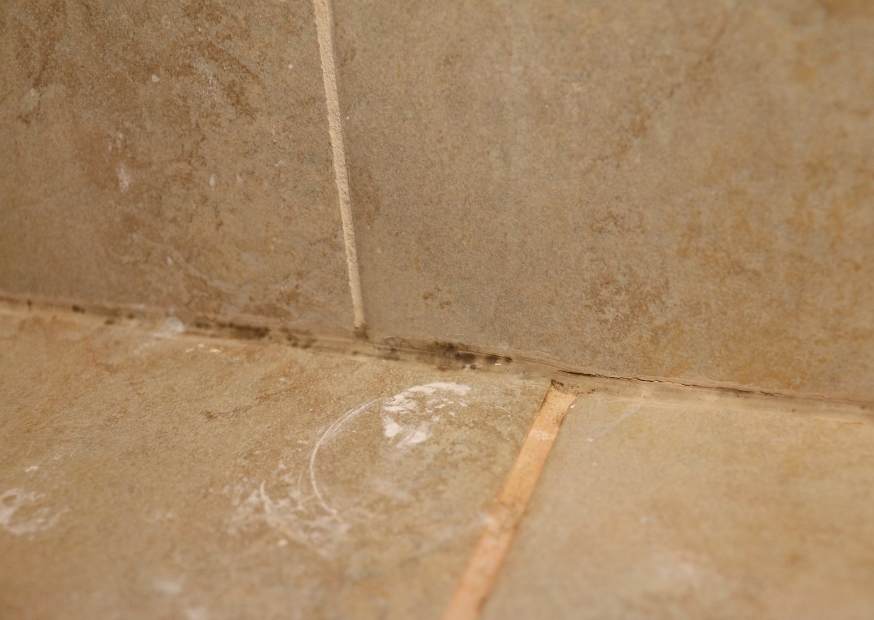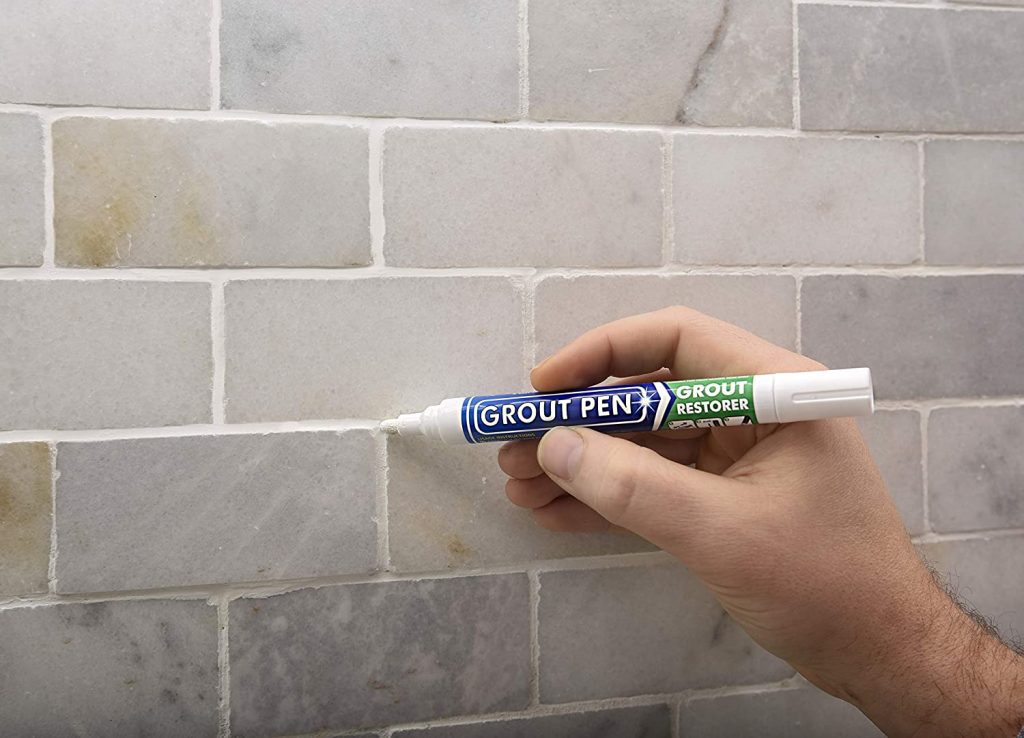


When should I regrout my shower?
When grout ages it begins to show signs of wear like cracks, mould and stains. Cracked grout leads to loose tiles… which opens up a whole new can of worms!
There comes a time when every homeowner steps into their shower and wonders if the grout needs a deep clean or a complete replacement.
We’ll be exploring the different courses of action for stained grout vs damaged grout, and the relatively new grout revival product that’s taking the world by storm.
How to tell when your grout needs cleaning vs replacing
Cracked, crumbling grout & loose tiles
Take a close look at your bathroom grout.
Is it still in relatively good condition (albeit a little grubby) and laying flat?
Or is it showing signs of severe wear – like cracking, crumbling…even holes! In the worst case scenario, your tiles will be loose or completely coming away.
If your grout is in the later condition, you need to re-grout your bathroom.
Leaving your grout in this state could lead to damp and mould issues when the water inevitably seeps through into your walls.
What starts as a relatively costly regrouting project turns into a structural & damp issue which will run the cost up even more. Not to mention put your bathroom out of action for several weeks…
If you’re reading this and thinking “This sounds like the grout in my bathroom!”, It’s time to get in touch with your local grout repair services to get the issue addressed ASAP.
However, if your grout is still in relatively good condition, we have good news for you! There’s way less cost and work involved to get it back to its former glory.
Read on for our tips.



Stained and mouldy grout
Hair dye, hard water and coloured bath products are the usual suspects when it comes to stubborn stains on your grout.
Mould is usually the result of water being left to sit on the area for extended periods of time, or improper ventilation to release the steam. It tends to be found in the ‘joins’ and around the base of the shower unit which is where water pools up and doesn’t drain properly after showers.
You’ll be pleased to hear that these issues can be fixed! And they don’t require hours of scrubbing with homemade potions you found on Pinterest!
If the mould is severe and black, we suggest using a commercial mould remover first before attempting the method below.
The better way to re-grout your stained shower unit
These days there’s a quicker & easier way to transform the grout in your bathroom and Kitchen. The miracle product on the market is the Grout Pen.
Rainbow’s Grout Pen was one of the first to the UK market and continues to be a leading DIY product for reviving stained white grout as well as recolouring grout.
What is a grout pen?



A grout pen resembles a regular marker – similar in shape and with a felt tip. However the magic lies in the ink formula inside.
Our White Grout Pens contain a water-resistant, anti mould and mildew paint that completely covers grubby stained grouts and transforms it back to its original sparkling appearance.
Our formula contains opaque chalk pigments, similar to that in our chalk based wall & furniture paints – and our popular chalk markers for chalkboards.
We made our Grout Pens with damp conditions in mind, so they stay fresh in your shower units, around the bath and sink.
The anti-mould properties keep mould at bay for longer, so you can spend more time relaxing and less time scrubbing.
Now it’s trendy to have contrasting grout colours, so you can also find a rainbow of colours on our website, from classic white, grey and black to brown, beige and terracotta.
How effective are grout pens?
It may be difficult to determine when your grout can be fixed with a grout pen and when the marigolds need to come out for some deep cleaning action.
So we’ve put a simple checklist together below.
Grout Pens can be used if:
- Your grout has turned a yellow / brown colour
- Hard water build-up needs covering
- Hair dye stains are visible
- Your shower has signs of light mould
Grout Pens should not be used if:
- Your grout is cracked or crumbling
- Your grout is severely mouldy
- Your tiles are loose or coming away from the wall
In conclusion, if the structure of your grout has broken down – it’s time for a replacement. It’s an inconvenient and sometimes costly job but well worth it considering the knock on damp problems that will otherwise occur.
If your grout is discoloured or mouldy – grout pens will usually do the trick! Check out our Instagram page for customers before / afters and browse our blog for more grouting tips!